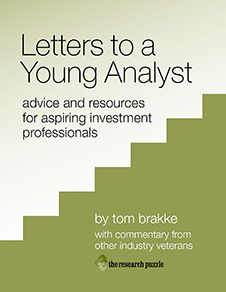
- Wednesday, November 12th, 2008
- dealing with the deluge
-
One of the attendees at Defragthe research puzzle | This is the third in a series of reports on Defrag 2008, held last week in Denver. The previous entry, “the social urge,” which sets up this posting, can be found via this link. happened to have been working as an analyst on Wall Street when email and Internet access changed the nature of communications with clients. She said that “time sped up,” with everyone wanting instant analysis of some sort, leading to a lot of time wasted regurgitating press releases rather than producing deep, thoughtful research. The new tools had changed not just the analytical methods but the content as well.
A similar effect is likely with social networking platforms and other Web 2.0 applications when applied to the business of investment decision making. It is easy to postulate the power of the people that can be tapped by such vehicles, but there are trade-offs with every approach, and I am skeptical about the cost/benefit of the effort expended versus the impact generated.
Most people at the conference were of the mind that each of us is awash in content, and that social media holds the promise of being able to sort through that, but in the meantime is itself contributing in a big way to the cluttering of our electronic lives. An opposing view was expressed by Stowe Boyd, /message | While I disagreed with some of what Boyd had to say, he gave me plenty to think about. As within a network, having someone at a conference that stands apart from the orthodoxy is incredibly helpful and important. who doesn’t believe in “information overload” and thinks that our cognitive skills are changing for the better as we become immersed in the flow. He acknowledges that only a small fraction of users (those who are of a certain mind and nature) will be able to take real advantage of the breadth of opportunities that exist. That seems right to me, which begs the questions: How do we structure the roles of those for whom connectedness works best? How do we — or do we — restrict the usage of social networks by those who are destined to burn up time and produce nothing of value? And, if everyone’s not involved in the network to a certain extent, can even the social stars gain the benefit we project?
These are knotty issues for anyone trying to adapt social media to the enterprise environment, to say nothing of navigating the interesting interpersonal dynamics at many investment firms. The tendency is to try to slap the new tools onto an existing structure, but the roles and organization charts of yore were products of their times, and were outmoded in many respects even before the emergence of social networks or their proposed application to the enterprise.tjb research | I touched on this awhile back when I wrote the sidebar for this page on the tjb research site. To take advantage of their promise, there needs to be a commitment to changing the approach to the business, its structure, and the roles of those involved. A haphazard adoption without much forethought, “buy in” at the top, or operational support is destined to fail. In the investment world, there needs to be special attention paid to privacy issues, information leakage, and regulatory requirements. Not an easy course of action by any means.
The skepticism I expressed earlier is not about the possibilities, but about the probabilities. Most firms won’t take the time to rethink their structures, processes, and incentives in a comprehensive way. To twist a phrase heard at the conference,A representative of a firm that is a leader in the business of online search declared, “A lot of search is stupid.” “A lot of social networking is stupid.” Any attempt to try to capture the potential benefits of such communal endeavors without addressing the underlying building blocks of the organization will prove the point and waste a valuable opportunity.
